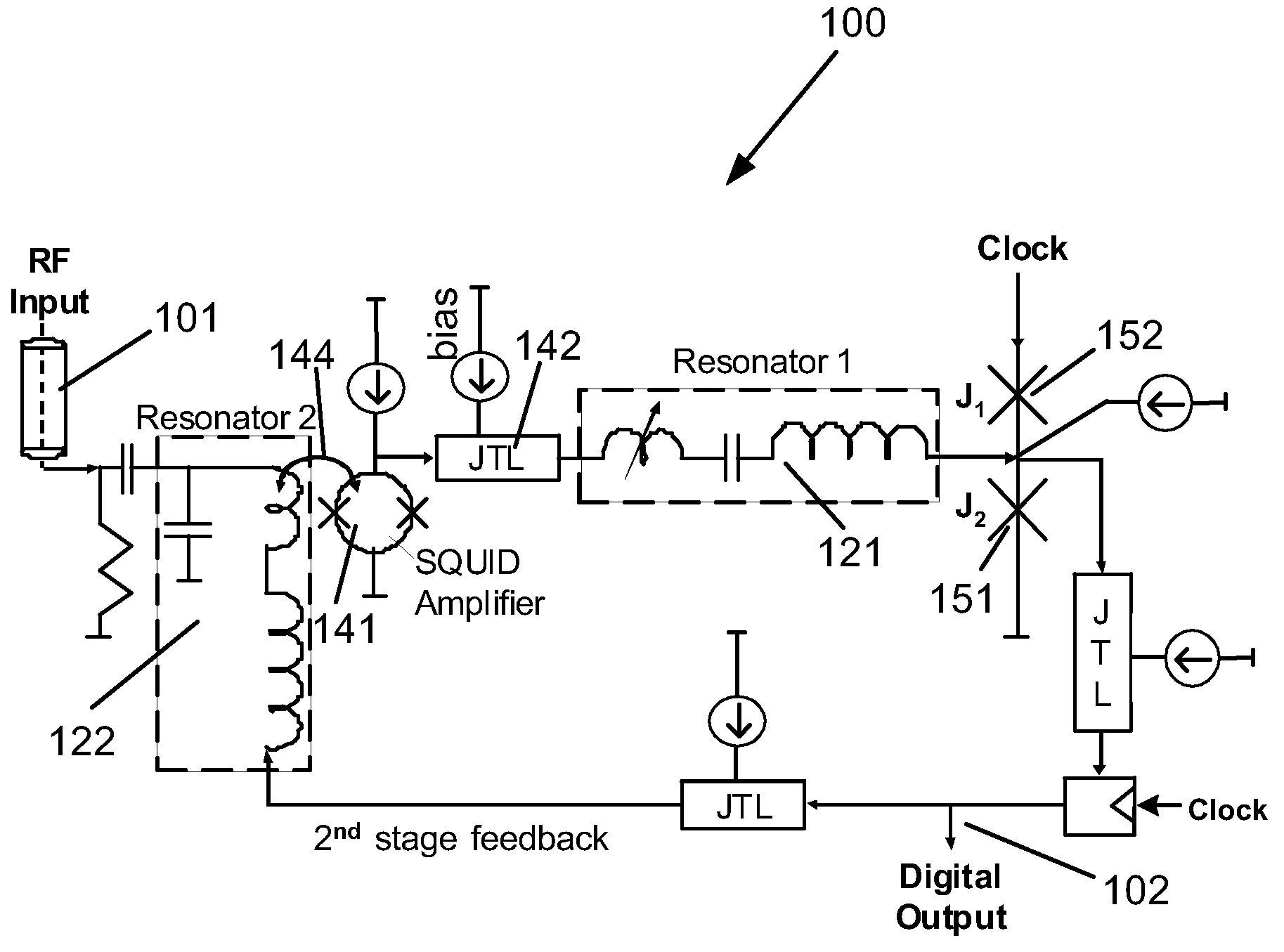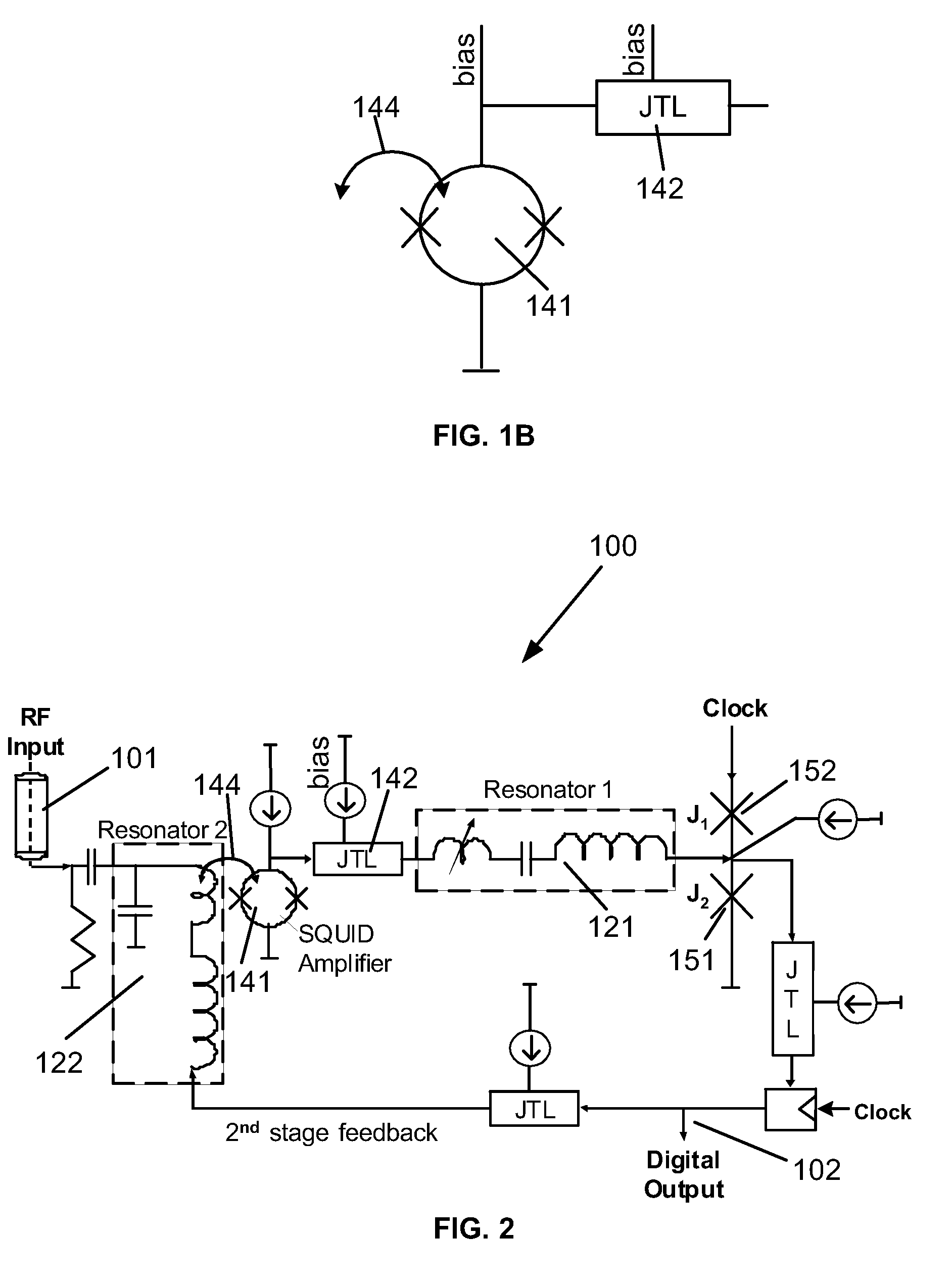Superconductor Analog-to-Digital Converter
a superconductor analog-to-digital converter technology, applied in analogue/digital conversion, transmission systems, instruments, etc., can solve the problems of “noise shaping” and the inability to achieve a higher order bandpass adc in fully superconducting technology
- Summary
- Abstract
- Description
- Claims
- Application Information
AI Technical Summary
Benefits of technology
Problems solved by technology
Method used
Image
Examples
Embodiment Construction
[0015]It is understood that sigma-delta (ΣΔ) analog-to-digital converters (ADC), also known as ΣΔ modulators, or delta-sigma (ΔΣ) modulators / ADC-s, are well known in the electronic arts. Basic concepts of superconductor ADC-s, meaning ADC-s composed of superconducting components, which components may include both active and passive components, have been discussed already, for instance by O. A. Mukhanov et al. in “Superconductor Analog-to-Digital Converters”, Proc. IEEE, Vol. 92, pp. 1564-1584 (2004).
[0016]Briefly, in a low-pass ADC based on sigma-delta (ΣΔ) modulation the input signal (minus an error feedback signal) is integrated before quantization. A variation of ΣΔ ADC-s is achieved by replacing the integrators by resonators. Using a resonator suppresses the quantization noise at a resonant frequency rather than at low-frequencies. Such an ADC is called in the art a bandpass ADC. For both the low pass, integrator type, and the bandpass, resonator type, ΣΔ ADC-s one can extend th...
PUM
 Login to View More
Login to View More Abstract
Description
Claims
Application Information
 Login to View More
Login to View More - R&D
- Intellectual Property
- Life Sciences
- Materials
- Tech Scout
- Unparalleled Data Quality
- Higher Quality Content
- 60% Fewer Hallucinations
Browse by: Latest US Patents, China's latest patents, Technical Efficacy Thesaurus, Application Domain, Technology Topic, Popular Technical Reports.
© 2025 PatSnap. All rights reserved.Legal|Privacy policy|Modern Slavery Act Transparency Statement|Sitemap|About US| Contact US: help@patsnap.com



